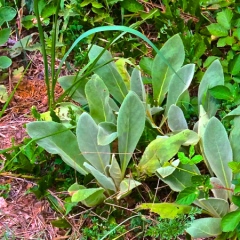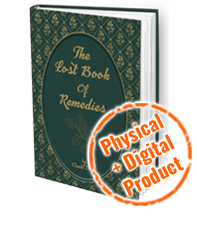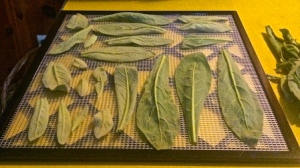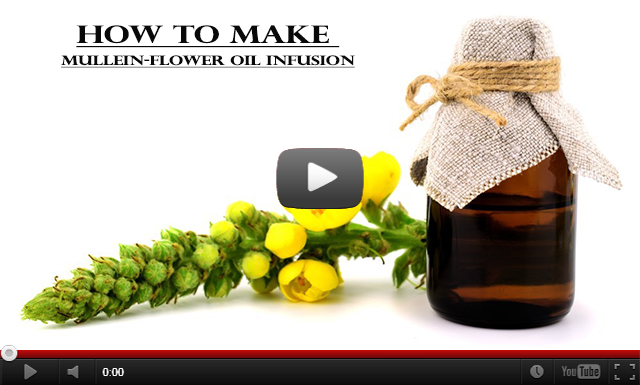As you can see, Common Mullein has many more uses than emergency roadside TP. Take a look…Ever been caught in the woods with nature calling you to a squatty position? If you forgot the Charmin, you’d still be a happy camper with Cowboy Toilet Paper (AKA – Common Mullein). It’s velvety soft leaves have wrangled many a woodsman and camper from certain disaster over a cat hole.
The fuzzy leaf of this botanical wonder may cause skin irritation (contact dermatitis). That’s not a bad thing if you happen to be a Quaker in the new world. Since Quaker women weren’t allowed to wear make up, these resourceful ladies rubbed the hairy leaves on their cheeks for a homemade blush to attract suitors. Hence the name Quaker’s Rouge.
If employed as Cowboy TP or camper’s wash cloth, wipe with the flow of the hairs not against. Use caution with sensitive behinds. If a rash occurs, plantain is usually close by.
Common Mullein (Verbascum thapsus) is easy to identify making it a safe gateway herb to wildcrafting and medicinal plants. The leafs, stalk, and root are safe for medicinal purposes.
First year plants grow as a rosette with large, wooly, hairy, velvety leaves. The silver-green foliage gives the plant an artificial waxed appearance. They grow in well-drained disturbed soil by roadways, abandoned fields, waste places, and even gravel, rocky soil in full sun.

Second year growth can reach heights over ten feet.
You may know this European weed transplant by other common names such as flannel flower, Quaker’s rouge, bunny’s ear, candle wick, great mullein, torchwort, miner’s candle, poor man’s blanket, hag’s taper, ice leaf, or Cowboy Toilet Paper. Whatever name you use, mullein has been a valuable mulituse tool for self-reliance for thousands of years.
Here’s why…
Properties of Mullein
Understanding the properties of herbs allows you to get the most out of your herbal medicine chest. Here’s the plant’s medicinal profile:
- Analgesic – pain relief
- Anticatarrhal – reduces inflammation of the mucous membranes (lungs, sinus, etc.)
- Antispasmodic – suppresses involuntary muscle spasms
- Antitussive – relieve or prevent coughs
- Astringent – contraction of body tissue, typically on skin
- Demulcent – forms a soothing film over mucous

Get your paperback copy HERE membranes
- Diuretic – increases urine production
- Expectorant – aid in the clearance of mucus from the airways, lungs, bronchi, and trachea
- Mucilant – coat and protect mucous membranes
- Vulnerary – promotes healing of wounds, cuts, and abrasions
For more information on medicinal properties of herbs, check out Bk2natuR’s Herbal Dictionary and other natural goodness!
An additional awesome herbal/wildcrafting resource can be found at Common Sense Homesteading. Laurie, a blogging friend of mine, has a great series called Weekly Weeder with 48 posts on using your weeds for culinary and medicinal purposes. I highly recommend her stuff!
As you can see, Common Mullein has many more uses than emergency roadside TP. Take a look…
Medicine
- Mullein tea (expectorant) helps facilitate lung function and removes congestion and mucus from the respiratory tract. Dried leaves may also be used as a smoke inhalation.
A dehydrator speeds up the drying process. Set your dehydrator on its lowest heat and process until dry. I set this batch on 95º for about 18 hours for crispy leaves.
[Side note: Even though out Excalibur uses little electricity, I want to build a solar dehydrator. If you have successfully built your own, please contact me. Thanks!]

- Oil infusion of the yellow flowers for ear aches
How to make Mullein-Flower Oil Infusion
A.) Locate a group of blooming mullein plants (June-September) and harvest the yellow flowers. You’ll need enough to fill a small jam or jelly jar half to three-quarters full. I ended up with about half a jar of flowers. This is tedious and time-consuming. Allow the blooms to dry for an hour or so to remove some of the water content.
B.) Fill the jar with olive oil or any oil you like and screw the lid tightly. Steep the infusion in a warm, sunny spot for about 2 to 4 weeks. Shake the infusion once a day – if you remember.
C.) Pour the infused oil through a strainer (cheese cloth or bandana) into another container for storage. Label, date, and store in a cool dark cabinet. For ear aches or wax build up, place a few (2-3) drops into the ear a couple of times daily until the problem clears up.
- Reduces swelling in glands via a compress and helps the lymphatic system – I can personally testify to its effectiveness with a recent swollen area on my body
- Laryngitis and tonsillitis remedy
- Mullein root strengthens the bladder
- Recipes and proper formulas using mullein root can be found here
Garden/Permaculture
- Improves soil as a nitrogen fixer and heals the worst soil conditions
- Feeds bees and other pollinators
- Compost material
- Some birds enjoy the seeds
- Rotenone, found in mullein, is synthesized for insecticide
- Goats won’t eat it so mullein is a good way to add some green to goat-ravaged land
Bushcraft and Self-Reliance
- Mullein leaves can be used inside shoes as a cushion and warmth
- Blanket mullein is one alias outdoor enthusiasts should keep in mind for emergency blanket
- Saponins in the seeds are said to be useful for stunning fish for easy collection – use only in a true survival scenario
- Dried leaves and seed pods make an excellent tinder for fire starting
- Dip a dried seed head stalk in tallow, bees-wax, or pine sap for a long-burning torch (torchwort, miner’s torch)
- The stalk can be used to create a friction fire – bow or hand drill style
Creek Stewart at Willow Haven Outdoor has a great video demonstrating the friction fire technique using mullein below:
Common Mullein is the common man/woman multi-tool of herbal self-reliance. Ah, a new alias… Common Man Mullein!
DISCLAIMER: This information is offered for educational purposes only. Do your own due diligence before foraging wild edibles and medicinal plants of any kind.
Keep Doing the Stuff of Self-Reliance,
Todd
This article was originally published at Ready Nutrition™
WHAT TO READ NEXT:
HOW TO MAKE YOUR OWN BACON (STEP BY STEP GUIDE)
A RETURN TO THE OLD PATHS: HOW TO MAKE PEMMICAN LIKE THE NATIVE AMERICANS
20 LOST RECIPES FROM THE PIONEERS: WHAT THEY COOKED ON THEIR JOURNEY WESTWARD
SEVEN CLASSIC GREAT DEPRESSION ERA RECIPES GRANDMA USED TO MAKE
POTTED MEAT: A LOST SKILL OF LONG TERM MEAT STORAGE
BACK TO BASICS: HOW TO MAKE AND PRESERVE LARD
THE BEST WAY TO STOCKPILE VEGETABLES OFF-GRID
OLD FASHIONED PRESERVING-GRANDPA’S RECIPE FOR CURED SMOKED HAM
HOW TO MAKE GUNPOWDER THE OLD FASHIONED WAY
SURVIVAL HERBAL RECIPES FROM OUR ANCESTORS
HOW TO PRESERVE MEAT FOR SURVIVAL LIKE OUR GRANDFATHERS
Survival Books
THE LOST BOOK OF REMEDIES-All Medicinal Plants and Lost Cures of North America
THE LOST WAYS-Learn the long forgotten secrets that helped our forefathers survive famines,wars,economic crisis and anything else life threw at them
EASY CELLAR-AMERICA’S NATURAL NUCLEAR BUNKERS: FIND THE CLOSEST ONE TO YOUR HOME
THE LOST WAYS 2-This lost super-food will bulletproof you against any food shortage or famine
BLACKOUT USA-EMP survival and preparedness guide
DIY HOME ENERGY-Follow the step-by-step guide from A to Z and you will have a working system to reduce your electricity bills and save energy
MY SURVIVAL FARM-This hidden survival garden will keep you well fed when SHTF
CARNIVORE’S BIBLE -THE REAL HOMEMADE AND HEALTHY MEATY TREATS OUR GRANDPARENTS USED TO MAKE…


Informative post! Another name is Adam’s Flannel. =)
Around here, eastern colo, mullein is a horrible invasive plant. We do all we can to minimize its footprint.
Interesting